
Choosing Your First Dirt Bike: A Comprehensive Guide for New Riders
Choosing Your First Dirt Bike: A Comprehensive Guide for New Riders
Introduction
Choosing your first dirt bike can be an exhilarating yet daunting experience.
For new riders, understanding the differences in bikes and what suits their needs best is key to having a fun and safe start.
This guide is designed to walk you through everything you need to know to make an informed decision, from engine types and brands to essential gear and budgeting tips.
Understanding Your Riding Goals
Before choosing a dirt bike, it’s essential to understand your riding intentions.
Are you looking to ride recreationally with friends on weekends or planning to compete on motocross tracks?
-
Recreational Riding vs. Competitive Riding
: If you’re primarily riding for fun on trails or open fields, you’ll want a bike that balances comfort and moderate power. For competitive riders interested in racing, precision, speed, and advanced suspension systems matter.
-
Terrain Preferences
: Dirt bikes are tailored for different terrains. Trail bikes, for instance, are built for rugged paths, while motocross bikes are optimized for racing tracks. Mixed-terrain bikes, on the other hand, offer versatility for riders who like to do a bit of everything.
Age and Experience Level Considerations
The ideal bike for a young rider differs greatly from one suited for an adult.
Here’s how to approach your selection based on age and experience:
-
Bikes for Younger Riders
: Kids and teens typically start with smaller, lightweight bikes. These range from 50cc to 110cc models, offering manageable power.
-
Entry-Level Bikes for Adults
: Adults new to dirt biking should start with 125cc to 250cc bikes. These models provide enough power to learn and grow without being overwhelming.
Determining the Right Engine Size
Choosing the correct engine size impacts not only your riding experience but also your safety.
-
50cc to 110cc for Kids and Beginners
: These bikes offer gentle acceleration and are perfect for younger riders. They’re lighter and easier to handle.
-
125cc to 250cc for Older Teens and Adults
: Ideal for learning fundamental skills without too much power. 125cc two-stroke bikes can offer surprising punch, while 250cc four-strokes tend to be more manageable.
-
250cc+ for More Experienced Beginners
: If you have a background in motorcycling or want more room to grow, a 250cc+ model might be suitable but expect a steeper learning curve.
Two-Stroke vs. Four-Stroke Engines
The engine type plays a major role in your bike’s performance characteristics and maintenance needs:
-
Two-Stroke Engines
: These bikes are generally lighter, deliver a quick burst of power, and are often cheaper to maintain. However, the power can be harder to control for beginners.
-
Four-Stroke Engines
: Known for smoother, more predictable power delivery and easier handling. They tend to be more beginner-friendly and require less frequent maintenance.
Dirt Bike Weight and Height Considerations
A bike’s weight and height should match your build for better control and confidence while riding.
-
Checking for Fit
: Sit on the bike; you should be able to touch the ground with your feet while seated. Consider how the bike’s weight feels when you’re maneuvering it.
-
Adjustability
: Some bikes allow for height adjustments or have aftermarket kits available, making them more flexible for different rider sizes.
Brand Reputation and Quality
When it comes to dirt bikes, brand reputation can often be a reflection of quality and performance.
Established brands like Honda, Yamaha, Valtinsu, KTM, and Kawasaki offer bikes with a proven track record for reliability.
-
Top Brands for Beginners
: Some brands produce models explicitly for new riders, such as the Valtinsu DB-110, Yamaha TTR230 or Honda CRF125F, known for their user-friendly designs.
-
Customer Support and Durability
: Go for brands with strong aftermarket support and a history of producing durable bikes.
New vs. Used Dirt Bikes
Both new and used dirt bikes have their pros and cons.
Your choice depends on your budget and long-term goals.
-
Buying New
: Offers peace of mind with warranties and the latest features. No history of mechanical abuse, but more expensive.
-
Buying Used
: Saves money but comes with risks. Always inspect used bikes thoroughly, checking for wear, frame cracks, and engine condition.
Essential Gear for New Riders
Safety gear is as important as your bike.
Here’s a list of essentials:
- Helmet: A certified helmet is a must to protect against head injuries.
- Goggles: Essential for eye protection from dust and debris.
- Gloves and Boots: Provide grip, protection, and stability while riding.
- Chest and Knee Protectors: Safeguard vital areas against impacts.
Budget accordingly, as investing in good-quality gear can make all the difference in your safety and comfort on the trails.
Cost Considerations and Budgeting
When buying your first dirt bike, it’s crucial to plan your budget carefully.
Dirt bikes come with not only an upfront purchase cost but also ongoing expenses, such as maintenance, fuel, gear, and parts.
- Initial Cost: New bikes typically cost anywhere from $3,000 to $10,000, depending on the brand, size, and features. Used bikes can be found for considerably less but may require repairs or upgrades.
- Maintenance and Upgrades: Expect to spend money on regular maintenance, such as oil changes, air filter replacements, chain care, and more. As you gain experience, you may also want to invest in upgrades to improve performance, such as aftermarket exhausts, better tires, or suspension adjustments.
- Budgeting Tips: Establish a budget that covers not just the bike but also necessary gear, training, and an emergency fund for unexpected repairs. Being well-prepared financially will help ensure you enjoy your dirt biking journey without unnecessary stress.
Maintenance Requirements for Beginners
Maintenance is a key part of owning a dirt bike.
Keeping your bike in good condition ensures a safe ride and a long lifespan.
- Basic Maintenance Tasks: New riders should learn essential maintenance tasks, such as:
- Oil Changes: Regularly changing your bike’s oil prevents engine damage.
- Air Filter Cleaning: Dusty trails can clog filters, reducing performance.
- Chain Maintenance: Keep the chain clean and well-lubricated to prevent wear and ensure smooth riding.
- Brake Checks: Make sure the brakes are responsive and in good condition.
- Frequency: Some tasks need to be done after every few rides, while others can be spaced out more. Always follow the manufacturer’s maintenance schedule.
- Impact on Riding Experience: A poorly maintained bike can lead to breakdowns or accidents, while a well-cared-for bike provides smoother, more enjoyable rides.
Training and Safety Courses
Enrolling in a training or safety course is highly recommended for new riders.
It provides a structured way to learn the basics and build confidence in a safe environment.
- Learning from Professionals: Experienced instructors can teach you important riding techniques, how to handle different terrains, and what to do in emergencies.
- Finding Courses and Clubs: Look for courses at local motocross clubs, off-road riding schools, or community centers. Joining a club can also introduce you to a supportive community of fellow riders.
- Benefits of Safety Courses: Beyond learning to ride, safety courses help instill responsible riding habits, reducing the risk of injuries and accidents.
Test Riding and Choosing Your Dirt Bike
Before making a final purchase, test riding the dirt bike you’re considering is a great way to ensure it feels right for you.
- What to Look for in a Test Ride: Pay attention to comfort, power delivery, weight distribution, and ease of handling. The bike should feel manageable but not too underpowered.
- Questions to Ask: When dealing with a seller, inquire about the bike’s history, previous maintenance, any replaced parts, and warranties. If buying from a dealership, ask about service options and support.
Top Dirt Bike Recommendations for New Riders
Not sure where to start?
Here are some popular beginner-friendly dirt bikes known for their reliability and ease of use:
- Honda CRF125F: This four-stroke bike offers excellent handling and smooth power delivery, perfect for new riders.
- Valtinsu DB-110: 110-150CC Air-Cooled 4 Stroke Gasoline Dirt Bike is a versatile and powerful off-road vehicle designed for riders seeking an exhilarating and reliable riding experience.
- Yamaha TTR230: A reliable, user-friendly bike with good suspension, ideal for trail riding.
- Kawasaki KLX140G: Light and manageable, offering great versatility for mixed-terrain riding.
- KTM 250 SX-F: For more experienced beginners who want room to grow, this bike delivers power and competitive features.
Final Tips for First-Time Dirt Bike Owners
Getting started with dirt biking can feel overwhelming, but with the right mindset and preparation, it’s a thrilling adventure:
- Build Confidence Gradually: Don’t rush into difficult trails or stunts. Focus on mastering the basics first.
- Regular Practice: The more time you spend riding, the better you’ll become. Aim for consistent practice sessions.
- Safety First: Always wear proper gear and follow safety protocols. Dirt biking comes with risks, but being prepared minimizes those risks.
Conclusion
Choosing your first dirt bike is an exciting milestone.
With so many options available, it’s important to select a bike that aligns with your goals, fits your skill level, and suits your budget.
Invest in proper safety gear, learn basic maintenance, and consider taking a riding course to make the most out of your new adventure.
Enjoy the ride, and happy trails!
FAQs
-
What size dirt bike should a beginner start with?
Most beginners start with bikes in the 125cc to 250cc range.
This size offers a balance of power and control, ideal for building confidence.
-
Is a two-stroke or four-stroke better for beginners?
Four-stroke engines are typically more beginner-friendly due to their smoother power delivery and predictable handling.
-
Can adults ride smaller-sized dirt bikes?
Yes, smaller bikes like 125cc models can be a great option for adults learning the basics or for those looking for a lighter, easier-to-handle bike.
-
How much should I budget for safety gear?
A full set of safety gear, including a helmet, goggles, boots, gloves, and protective armor, can cost between $500 and $1,000, depending on the brand and quality.
-
Should I buy a used or new dirt bike as a beginner?
This depends on your budget and mechanical knowledge.
New bikes offer warranties and peace of mind, while used bikes are more affordable but require careful inspection.


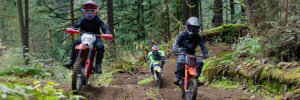
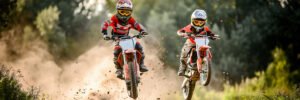
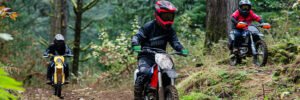
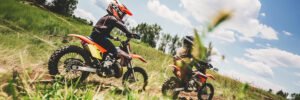
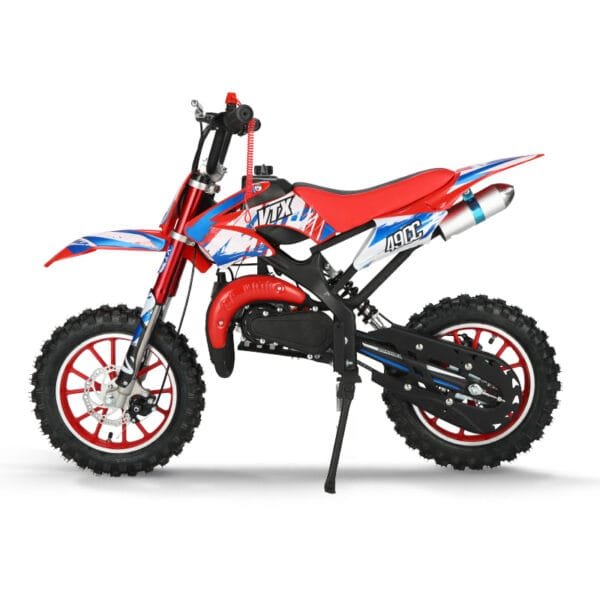
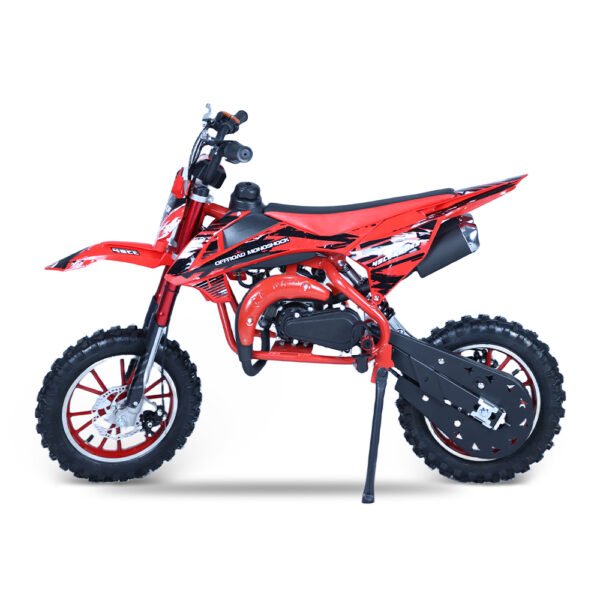
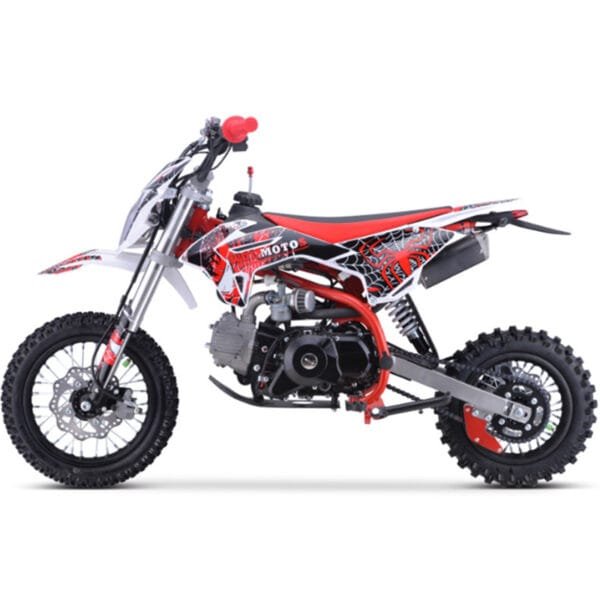









Melanie
Amazing issues here. I’m very happy to peer
your article. Thank you so much and I am looking forward to touch you.
Will you kindly drop me a mail?